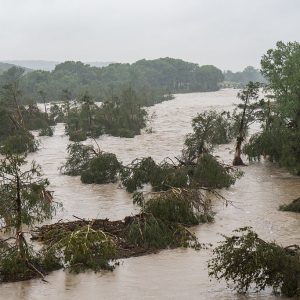When something unexpectedly emerged from the sea, people were STUNNED. What was seen in the water by tourists on the Romanian shore caught them off guard. A wounded dolphin was brought to the shore by the waves.
In an effort to save it, the dolphin was dragged out of the water, but it was too late. It is a mammal of the species Delphinus Delphis, according to experts.
There were several wounds on its body, most likely from fishing nets.
There are three types of marine mammals in the Black Sea:
(Delphis delphis ponticus) Common dolphin
Dolphins with the bottlenose (Tursiops truncatus ponticus)
Porpoise of the harbor (Phocoena phocoena relicta)
The principal food sources and morpho-anatomical traits of the dolphins of the Black Sea are different. While the common dolphin consumes fish and other species found in the water column, the bottlenose dolphin and harbor porpoise mostly consume fish and other benthic organisms.

Each species has preferred habitats based on these factors: the first two species are primarily found in coastal areas, but the common dolphin is typically found in offshore zones.
The dorsal side of the common dolphin is bluish-gray to brown in color, with a very weak V-shaped lateral boundary. The insertion of the pectoral fins is connected to the lower jaw by a pigmented band that varies in darkness. The caudal, pectoral, and dorsal fins range in color from black to gray-brown.
Their height at birth ranges from 0.8 to 0.95 meters. They don’t grow taller than 2 m in the Black Sea (males: 177 cm, females: 159 cm). They are extremely vulnerable to noise and chemical pollutants. They typically congregate in pairs or isolated individuals, as well as groups of 10 to 15 people. They can swim at a rate of about 50 kilometers per hour. They typically breathe at the surface in intervals of 1/3 second while engaging in brief dives. They live up to 70 meters below the surface.
They are sexually mature at the age of two years, have a gestation period of ten months, and are weaned at the age of four months. They have remarkably strong parental instincts. Their expected life span is 25 to 30 years. Their primary food sources are small pelagic fish (sprat, anchovies, and gobies) and crustaceans, although their stomachs also frequently contain other species such horse mackerel, cod, bluefish, red mullet, sea bass, shrimp, and mollusks. They eat about 10 kg of food each day.






